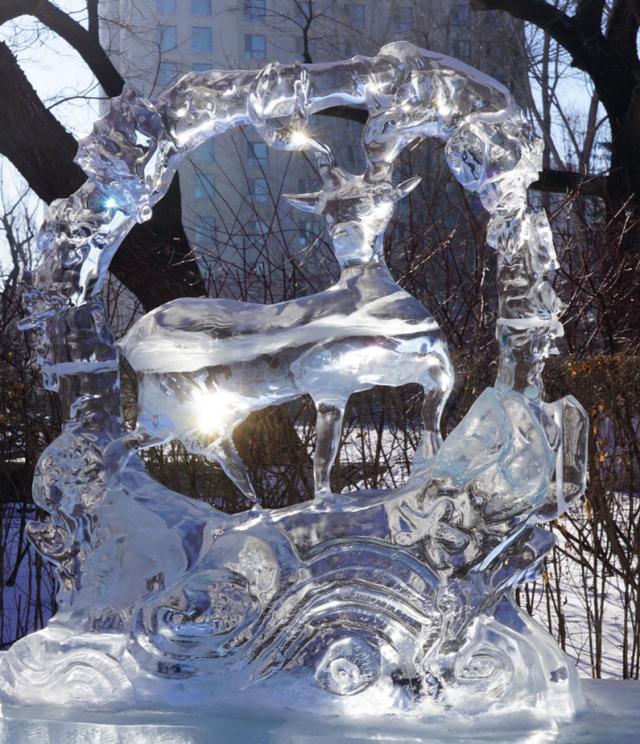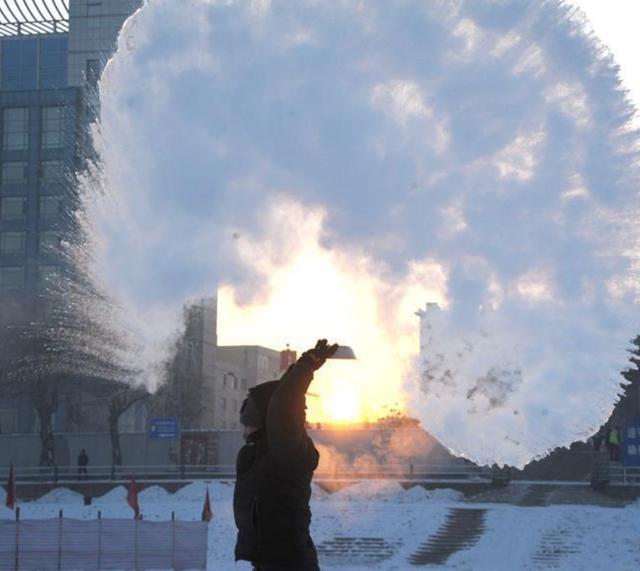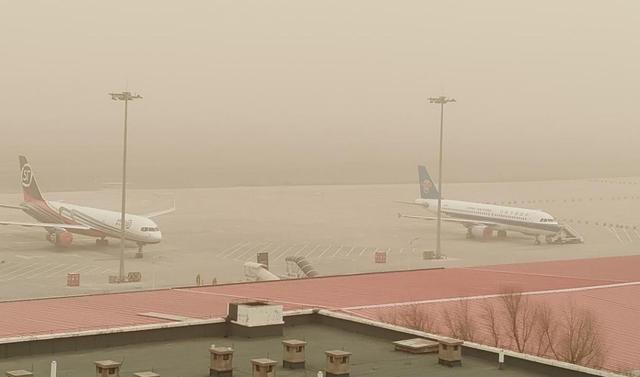The highest temperature reached an extreme value in March, and it rose strongly three times … The top ten weather and climate events in Harbin in 2023 were released.
In the past 2023, we experienced a variety of complicated and changeable weather, which one impressed you the most? On January 10th, 2024, Harbin Ecological and Agrometeorological Center (Climate Change Center) released the top ten weather and climate events in Harbin in 2023, including extremely cold in the Spring Festival of the Year of the Rabbit, extremely heavy rainfall from August 2nd to 4th, and rare snowstorm from November 5th to 6th. Let’s review these weather and climate events together:
1. During the "March 9th" season, the highest temperature reached an extreme value.
According to the average climate, March 949 is the coldest time of the year in Harbin. However, after entering the "Sanjiu" in 2023, the temperature was uncharacteristically rising continuously. On January 11-13 (the 3rd-5th day of the "Sanjiu"), the daily average temperature of the whole city was 13.4 ~ 15.6℃ higher than that of the same period in history. On the 11th, the highest temperature in most districts and counties (cities) rose to above 0℃, and on the 12th, except Mulan, the average temperature in other cities was 13.4 ~ 15.6℃. Although it is the "March 9" season, there is actually a "Xiaoyangchun" scene of melting snow and ice.

On January 12, 2023, the ice sculptures on the streets of Harbin showed signs of melting.
2. The strongest abnormal cold event since 2001 occurred during the Spring Festival of the Year of the Rabbit.
In late January, the cold air affecting Harbin was unusually strong, and the average daily temperature in 10 of the 11 days was lower than the historical average on the same day, especially during the Spring Festival of the Year of the Rabbit, the average temperature in the city was 7.3℃ lower than that in the same period in history, and the strongest abnormal cold event occurred since 2001. Among them, the average temperature of the whole city on the second day (23rd) and the third day (24th) of New Year’s Day was -29.9℃ and -28.0℃, which were 11.4℃ and 9.6℃ lower than the historical period respectively. The lowest temperature in Yilan New Year’s Day is -35.1℃ (extremely cold), and the lowest temperature in Mulan New Year’s Day is -41.8℃ (extremely cold), both of which have exceeded the lowest value in late January since 1961. Many ice city citizens have personally experienced the fun of "splashing water into ice".

During the Spring Festival in 2023, Harbin citizens experienced the fun of "splashing water into ice"
3. On March 22nd, Harbin suffered the strongest dusty weather in 2023.
Affected by Mongolia’s low pressure, Harbin was hit by the strongest dusty weather in 2023 on March 22, and the sky in many places was filled with yellow sand and dust. Among them, there were gusts of magnitude 8 in the main urban area of Harbin, Shuangcheng, Bayan, Binxian and Yilan. The air quality index (AQI) of the main urban area was off the charts for 11 hours from 11: 00 am to 21: 00 pm, and the primary pollutant was PM10. At 15: 00, the concentration of PM10 was as high as 2719 μ g/m3, and the minimum visibility was less than 1 km. Harbin Taiping International Airport has an average wind speed of 12 m/s (level 6) and a maximum wind speed of 15 ~ 22 m/s (level 7 ~ 9). The airport started the yellow warning response of gale, and 49 flights were affected that day, of which 44 flights were cancelled.

Harbin Taiping International Airport in March 22, 2023, which was hit by dust.
4. The temperature is extremely high in March, and there are three strong warming processes in the month.
In March, the influence of warm air on Harbin was unusually strong and active. The average temperature in the city was 0.8℃, which was 4.2℃ higher than the historical period, ranking the third highest since 1961. There were three periods of strong warming weather in the month, in which the average temperature of the whole city was 11.6℃, 8.4℃ and 7.3℃ higher than that of the same period in history on May 6, 19-22 and 29-31, respectively, which exceeded the extreme value of the same period since 1961.

Variation chart of daily average temperature anomaly in March 2023 in the whole city
On July 6th, wuchang city was hit by a tornado, and some houses were damaged.
Affected by the northeast cold vortex, at about 16: 05 on July 6, Shuangshou Village, Changshan Township, wuchang city suffered a tornado disaster. The nearest regional automatic weather station monitored that the maximum wind speed was 18.6 m/s (magnitude 8) from 15: 00 to 17: 00. The tornado intensity level is the first level of meteorological industry standard (weak tornado, equivalent to EF0 level in the United States), with 120 people affected, 1 household and 2 houses severely damaged, and 120 houses in 60 households generally damaged, resulting in a direct economic loss of about 600,000 yuan. This tornado disaster is the third consecutive year that this kind of disaster occurred in our city after the tornado disaster occurred in some areas of shangzhi city and Acheng District on June 1, 2021 and in Weiguo Township, wuchang city on May 14, 2022.


Tornado disaster site in Shuangshou Village, Changshan Township, wuchang city
6. On August 2-4, extreme heavy rainfall occurred in the southern part of Harbin.
On August 2-4, 2023, due to the combined influence of the residual water vapor of No.5 typhoon "Du Surui" going northward and the shear at the back of the subtropical high, there was heavy rainfall in Harbin, in which the rainfall and rainfall intensity in the southern region were extremely strong, the rainfall lasted for a long time and the disaster was heavy. The rainfall in Wuchang and Longfeng Mountain on August 3rd was 145 mm and 171 mm, respectively, reaching the extreme value of single-day rainfall on record. In some areas, the accumulated rainfall exceeds 250 mm, of which the rainfall at Wuchang Guoqing Village (5) Hydrological Station reaches 350 mm.. The hourly maximum rain intensity reached 106 mm/h, which appeared in Wuchang Security Fort (18-19: 00 on August 3). The rainfall in Shangzhi and other places lasts for about 60 hours. Extreme rainstorm caused the No.1 flood in 2023 in many rivers such as Mayi River and Lalin River, and the highest water level and maximum discharge of Danianzigou (II) of Mangiu River and the hydrological stations such as Shangzhi, Yanshou and Lianhua of Mayi River ranked first since the local stations were established. Mopanshan Reservoir and Longfengshan Reservoir operated beyond the flood season limit on August 5-8 and August 4-6, with the maximum water level exceeding 5 meters. Extreme storms and floods have damaged bridges, flooded farmland and damaged houses, which have adversely affected the production and life of local people.

Extreme rainstorm caused floods in Shangzhi and Wuchang.
7. The temperature during the mature harvest period of crops is abnormally high, and the first frost in most agricultural areas is late, which belongs to the year of "Zilaoshan".
The temperature in September-October of 2023 in Harbin is 1.6℃ higher than that in the same period in history, with the average temperature in September and October being 16.5℃ and 7.6℃ respectively, ranking the first and fifth highest in the same period in history since 1961. The unusually high temperature makes the first frost in most agricultural areas late. Except for the light frost in Yilan and Shuangcheng on September 21 and September 23, the first frost date in other districts and counties (cities) is October 5-7, which belongs to the year of "Zilaoshan", which is very beneficial to crop maturity and harvest.

Wuchang city Rice Harvest Site in 2023
8. On November 5-6, an extremely heavy snowstorm occurred in Harbin.
In November, 2023, there were frequent snowstorms in Harbin, and the average monthly precipitation in the city was as high as 68.2 mm, which exceeded the value in November since 1961. Among them, the most influential extreme snowstorm occurred on the night of November 5th to 6th, and the average snowfall in the whole city was 36.4 mm. Shangzhi, Fangzheng, Yanshou, Yilan, Mulan, Wuchang and Binxian reached the magnitude of extremely heavy snowstorm, and the snowfall in other districts, counties (cities) except Harbin, Hulan and Acheng exceeded many values since local records. A total of 22 stations have accumulated snowfall of more than 30 mm, with the largest snowfall of 53.7 mm in Bird River in Bin County. In the early stage of precipitation in Shuangcheng and Wuchang in the south, there were short-term sleet or freezing rain, and wires froze. At the same time, there are gusts of about 9 in most areas with snowstorms, and the minimum visibility is only 100 ~ 500 meters. The average depth of newly added snow in the city is 25 cm, and the maximum is 37 cm. The extreme snowstorm weather has a great adverse impact on traffic and clearing snow and ice in the city. However, after a snowstorm, the ice city presents a winter scene of ice and snow, which makes tourists linger, and the ice and snow tourism heats up rapidly.

On November 6, 2023, Harbin citizens traveled in the snow.

Ice and snow tourism in Harbin heats up rapidly after snow.
9. The continuous low temperature in November caused the Songhua River to freeze 11 days earlier.
In November, the average temperature in the city was -8.6℃, which was 3.1℃ lower than the same period in history, and the degree of low temperature ranked eighth since 1961. In the month, the daily average temperature was lower than that in the same period in history except that the temperature was higher than the climate average on the 2nd, 16th and 18th-22nd. Among them, the average temperature on the 11th and 12th was 10.0℃ and 10.7℃ lower than that in the same period in history. The abnormally low temperature caused the Harbin section of the Songhua River to freeze at 08: 00 on November 13th, and the freezing date was 11 days earlier than the average freezing period for many years.

Harbin section of Songhua River was frozen on November 13th, 2023.
10. In the middle and late December, there was an unusually continuous low temperature period, and the world of ice and snow opened ahead of schedule, and the ice and snow tourism was getting better and better.
On December 10-22, there was an unusually low temperature. The average temperature in the city was -22.9℃, which was 7.0℃ lower than the historical period, ranking first in the same period since 1961. The lowest temperature is below -30℃ in many places, and the lowest temperature in Mulan and Yanshou is below -35℃. The continuous low temperature is conducive to the ice harvesting operation on the river surface and the production of ice and snow landscape. The 25th Harbin Ice and Snow World opened to welcome guests at 11 am on December 18th, and the opening date was one week earlier. Tourists come in droves, "looking for the cold and enjoying the snow", enjoying the "world of ice and snow", and Harbin’s winter tourism is getting better and better.

The 25th Harbin Ice and Snow World
Reporter: Li Weibing
Reporting/feedback